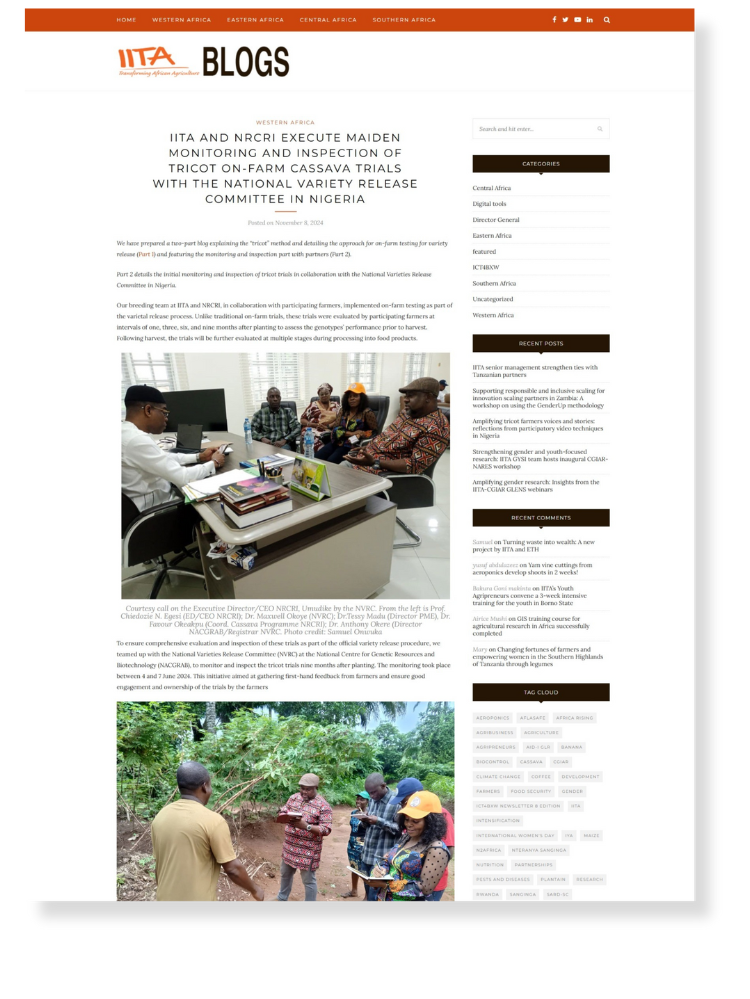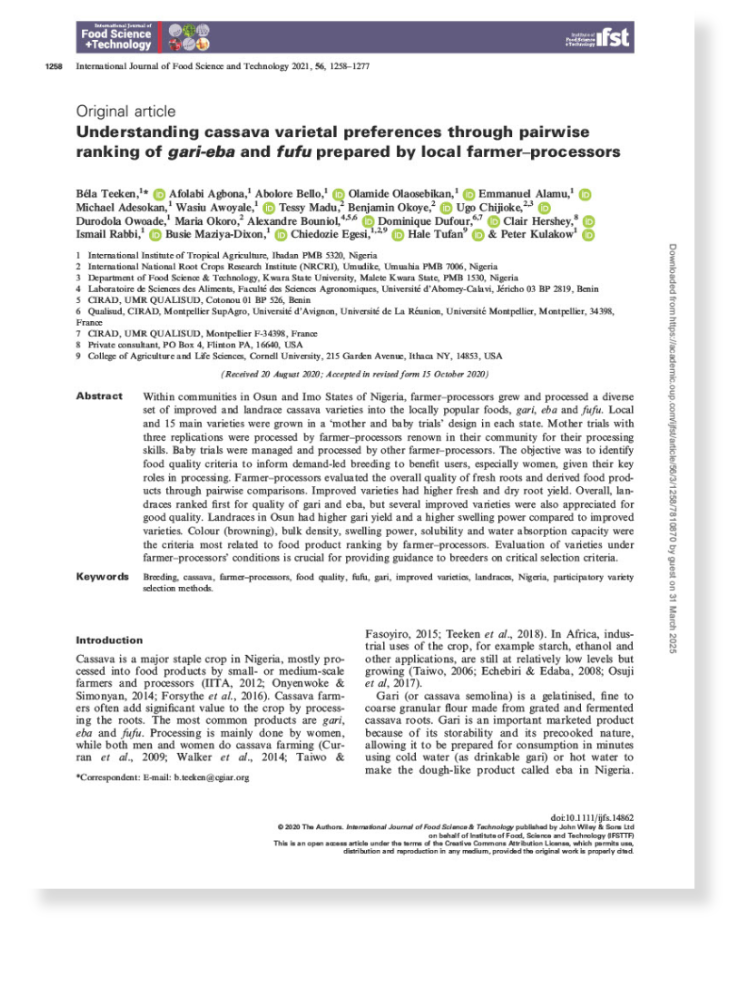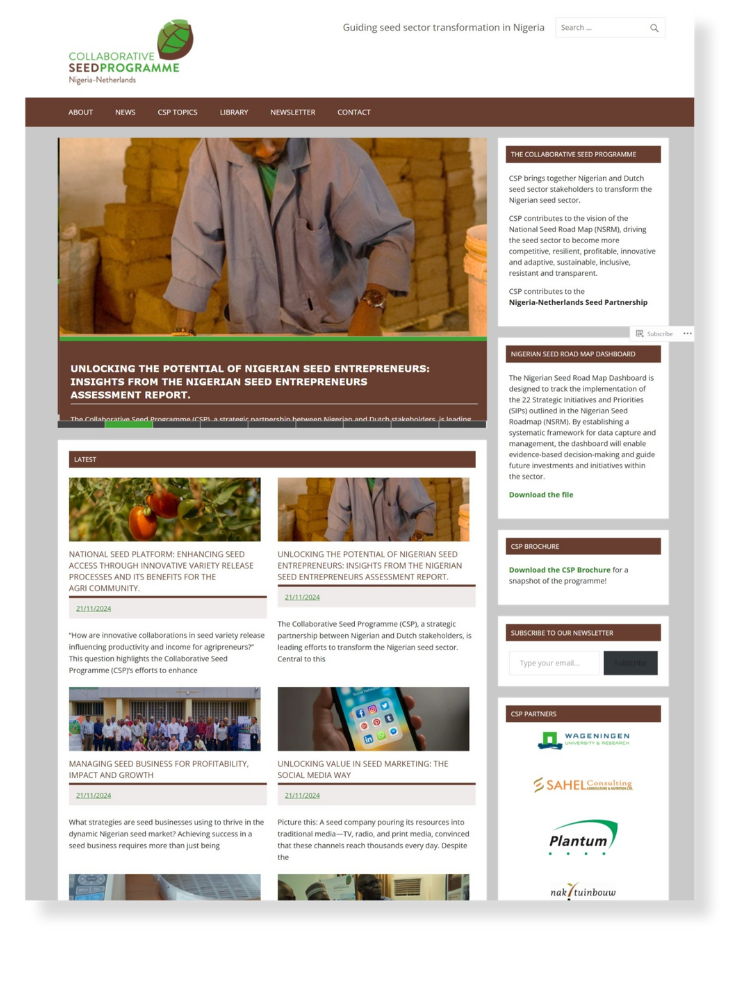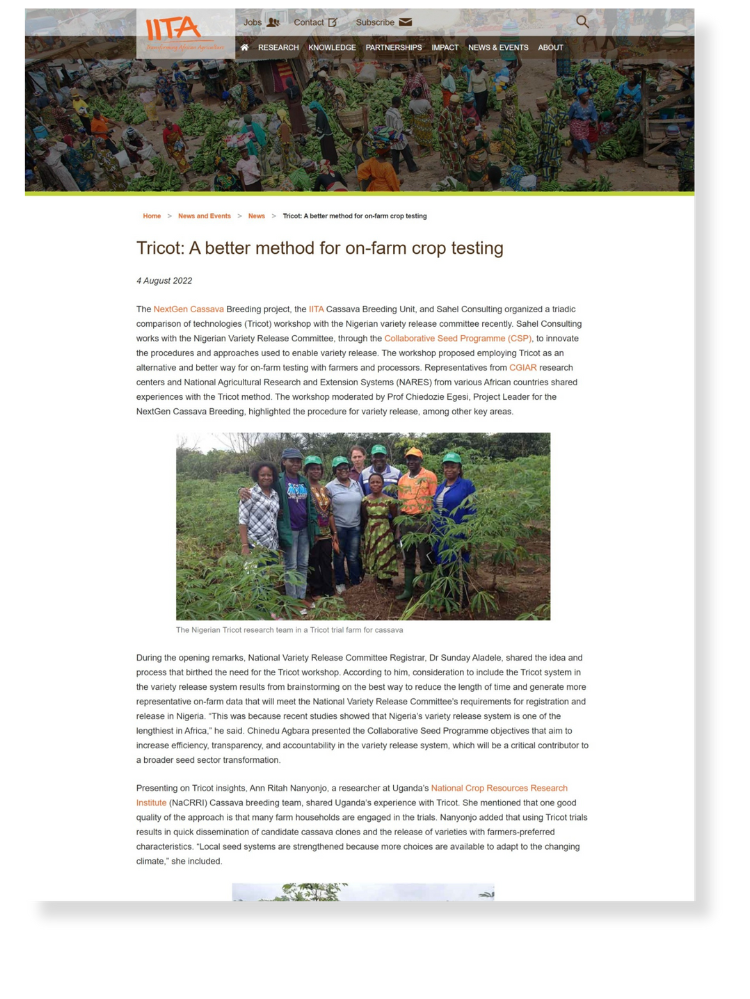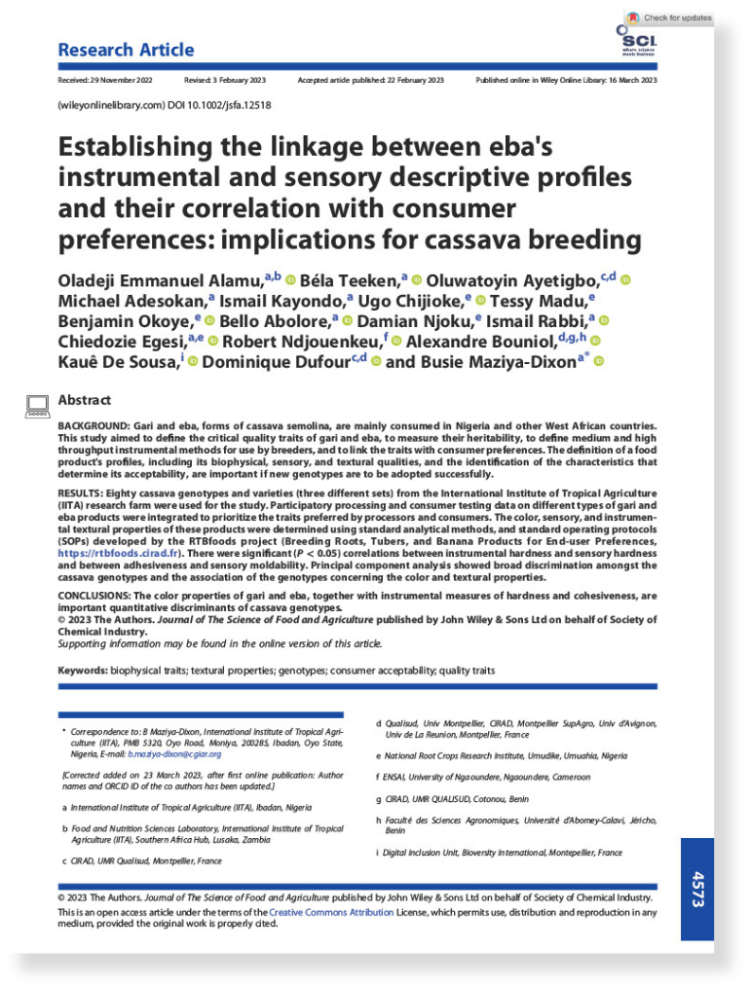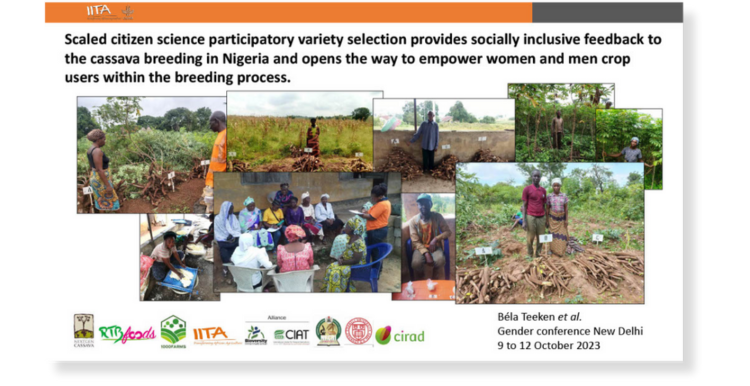Building on the tricot methodology of helping farmers identify crop varieties and technologies most suited to their conditions, this activity focuses on standardizing and expanding the types of data collected on-farm. This includes farmer-led yield estimation, with wider use of mobile phone-based phenotyping and image analysis of traits and soil characteristics across CGIAR crops.
Standardized protocols are being developed to sample a diverse range of farmers, consumers, and other stakeholders, and to learn from farmer interactions.
These data collection methods are being tested in ongoing CGIAR tricot partnerships under at least three other Bill & Melinda Gates Foundation-funded CGIAR projects focused on cowpea, cassava, beans, and maize. Standard operating procedures are being developed and published for both farmer and consumer testing (including processing traits).
The project builds on ongoing and planned financial analyses and cost–benefit analyses of on-farm trial (OFT) methods. One aim is to determine the cost per data point. This is a compelling way of documenting the value add of OFTs through expanded on-farm evaluations in late-stage variety evaluations. It also assists National Agricultural Research and Extension Systems (NARES) partners in making informed decisions on resource allocation. This activity is led by the International Institute of Tropical Agriculture (IITA).
Discover more with these resources
Most countries stipulate that new crop varieties need to be tested before they can be commercialized. This is a form of consumer protection for seed, as it is difficult for farmers to know if newer seeds are indeed better. Variety testing includes several steps, but testing their performance directly on farms is especially challenging. How this is done is not standardized, resulting in varying degrees of effectiveness. This flyer explores how to address this issue. The 1000FARMS project worked with a range of stakeholders, led by IITA and the National Root Crops Research Institute (NRCRI), to model the tricot approach for on-farm testing.
Discover the innovative cassava breeding collaboration between IITA and NRCRI in Nigeria in this documentary. See how they’ve enhanced the tricot method for inclusivity, especially in social and gender aspects. The film showcases their partnership with the variety release committee to pilot tricot for on-farm testing, gathering valuable insights on crop preferences considering regional, climate, and social/gender differences. Learn how tricot empowers crop users, involving them in the breeding process, and acts as a learning and knowledge-sharing platform.
Learn about the details of the initial monitoring and inspection of the tricot trials in collaboration with the National Varieties Release Committee in Nigeria in this second blog post in a two-part series by IITA.
Read this journal article published in the International Journal of Food Science + Technology which aims to understand the preferred cassava varieties through pairwise ranking of gari-eba and fufu prepared by local farmer–processors.
The Collaborative Seed Programme brings together Nigerian and Dutch seed sector stakeholders to enhance the performance of the Nigerian seed sector. The programme aims to contribute to improved sustainable income, food, and nutrition security of rural households in Nigeria, by improving farmers’ access to and use of quality seed of improved varieties.
Catch up on a webinar which shared experiences of tricot as an alternative method for on-farm testing with farmers and processors.
This study published in the Journal of the Science of Food and Agriculture defines the critical quality traits of gari and eba, to measure their heritability, to define medium and high throughput instrumental methods for use by breeders, and to link the traits with consumer preferences. The definition of a food product’s profiles, including its biophysical, sensory, and textural qualities, and the identification of the characteristics that determine its acceptability, are important if new genotypes are to be adopted successfully.
Discover varietal and trait preferences of cassava farmers and the processors in their households and how they differed by value chain actor, gender, region, and typologies of users in this IITA study, and learn ways to empower women and men crop users within the breeding process.
Discover more about our other activity areas
Variety performance analysis | Inform product management | ClimMob platform integration | 1000FARMS course | On-farm trial networks


